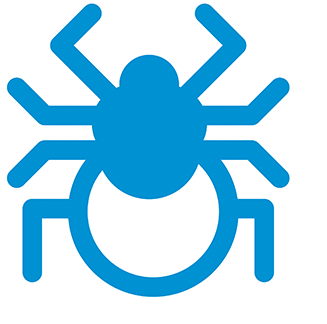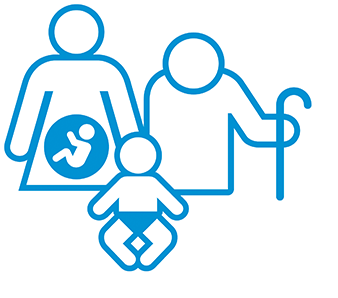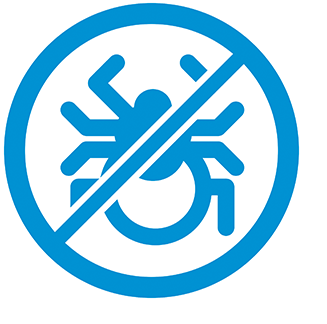Most infections pass unnoticed. If symptoms occur, they may be very different in nature and occur singly or in combination with others at different points in time. This means that borreliosis can be very hard to diagnose.
One typical symptom that presents in around 90% of cases is what is known as bull's-eye rash (Erythema migrans). This is a circular rash at least 5 cm in diameter, which is usually paler in the middle than on the outside and expands outwards over the course of several days. The rash develops at the site of the bite after three to 30 days, but it may also appear in other places, such as the legs, head or neck. A high temperature, swollen lymph glands and muscle and joint pain are also possible as the disease progresses. Much less frequently, and mostly in children, nodule-like or bluish-red skin swellings are also possible. These skin changes are most likely to occur around the ear, nipples or in the genital area.
In a small number of cases, chronic inflammation of the skin (Acrodermatitis chronica atrophicans) is possible, whereby the skin changes on the inside of the arms, legs, fingers or toes and becomes paper-thin and bluish in colour as the disease progresses.
If the borrelia affect the nervous system, this is termed neuroborreliosis. This occurs in around three out of every 100 sufferers. The symptoms of neuroborreliosis usually begin a few weeks or months after the tick bite and are characterized by burning nerve pain, which is particularly severe at night. This is often accompanied by facial paralysis on one or both sides. Inflammatory nerve irritation is also possible, which can lead to numbness, vision or hearing impairments and, in rare cases, to paralysis of the torso, arms or legs. In children, neuroborreliosis more frequently manifests in the form of a non-suppurative meningitis, which may be accompanied by severe headache or sudden visual impairment. Very infrequently, a late neuroborreliosis can develop after months or even years.
Around five out of every 100 sufferers will present with joint inflammation (Lyme arthritis). This most commonly affects the knee joints, less frequently the ankles or elbows, and generally progresses in recurrent phases.
Very rarely, the heart can also be affected in the course of the disease, with inflammation or arrhythmia of the heart.





